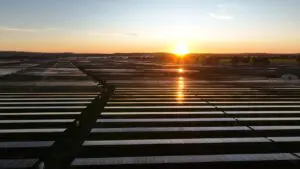Almost five million Australians have benefited from policies that support solar energy. They responded in droves to incentives, installed 3GW of rooftop solar and invested billions of dollars in an unprecedented public investment in distributed generation.
However, given that government policy is a fickle political weapon, the vast majority of incentives are gone or in grave danger. The pendulum of political favour is swinging the other way.
Just one example is the Queensland Competition Authority’s (QCA) recent announcement about solar export FIT’s. In 2013 the QCA enquiry into FIT’s found that, in summary: ”The price paid for electricity returned to the grid should reflect its real value. The QCA proposes that future feed‐in tariffs should be no more than the value to retailers of the energy they on‐sell from their customers with solar panels”
Now of course, calculating what the fair and reasonable value actually is, is very difficult. It varies by geography, by network type and a whole myriad of other issues. And it changes over time.
What we do know now, is that in both NSW and QLD it was agreed that there is a value of exported solar energy, which predominantly goes to retailers. In the latest NSW determination, this value was calculated as being between $0.066/kWh and $0.112/kWh. In Queensland, their most recent calculations determined the value as $0.0755/kWh in SouthEastern Qld and $0.632/kWh in the predominantly rural, Ergon Energy based region. Other states have come up with similar numbers around Australia.
Now we could debate this valuation or argue that far more comprehensive modelling is required. But we don’t have to because this perennial debate has undergone years of debate in one US State. State officials, utility representatives and solar advocates in Minnesota have done the hard work for us and recently announced a groundbreaking step forward recently passing legislation on the “Value of Solar Tariff Methodology“. Unlike our regulators, this team developed a formula which can be used to calculate not just the retail energy value, but also the value of externalities, the planning value and the broader societal costs and values.
But let’s put this far more comprehensive formula aside and assume that Minnesota got it wrong and our regulators got it right, just for a moment. We might not like the conservative result, but we have a value. What now?
Logically, regulators would presumably look at this value and say: “Well, that’s the windfall profit that Retailers would get for exported solar energy. They should compensate households and businesses who invest their own money to generate this energy; giving it away for nothing would be utterly inequitable and simply transfer value from consumers to corporations”.
That would be logical and equitable.
But no, that is not how it works.
In NSW’ case some years ago the Government found that forcing retailers to pay for this energy was (inexplicably) in-appropriate, so they made it a “recommended voluntary contribution”. And the QCA just came to the same conclusion, citing their southern neighbour’s similar policy.
This got me thinking; Were checks and balances included in the policy to measure it? Has this voluntary policy been effective? How much is the energy worth?
I’ll answer these one by one.
Were checks and balances included in the policy to measure it?
The short answer is no. The terms of reference for the development of these policies did not include the development of a mechanism to measure consumer acceptance of voluntary offers, and regulators simply act within the boundaries they are given. I checked with both IPART and the AER to see if they collect such data and they do not. So, we have no way of knowing how many consumers are actually taking up these offers.
However, we can gain a pretty strong indication of how likely they are by looking at what offers out there. Firstly, there are hundreds and hundreds of tariffs on offer, so simply navigating to the best solar export offer is not easy. Secondly, many retailers simply do not offer export tariffs as part of their most competitive energy deals. They also constantly change their offers, so keeping track is astounding difficult. Thirdly, consumers are being urged to chase negotiated contracts by Government and media as a way of saving money.
I would suggest that any policy that doesn’t have a mechanism in place to monitor its performance resulted in no-one knowing if it is effective or not. Epic policy fail.
Has this voluntary policy been effective?
We don’t know for sure, cant get the data and no-one has the responsibility to collect it. Anecdotely and logically however, we can reasonably assume that if it is hard to get on board and has little perceived value, few if any consumers are taking the offers up.
I also asked a bunch of solar installers. The general consensus was that its is generally too complicated so the majority of consumers probably don’t bother or, simply forget when they are offered a better deal on purchases. Over time even those who did sign up quite probably drop off.
One can also pretty reasonably assume that given a choice, the vast majority of retailers would not pay for this energy if they don’t have to; that’s just business. Why incur a cost of they don’t have to? Sure, make an offer, but don’t make it attractive or easy.
The fact that a value was calculated on this energy and yet no policy was developed to ensure the value was reasonably compensated is a complete and utter policy failure. Epic policy fail.
How much is the energy worth?
This, we can calculate. In the case of NSW, recently released data shows how much solar is installed in NSW under the Solar Bonus Scheme and non-Solar Bonus Scheme tariffs, and how much energy was generated in 2013. We also known from real data, what the average export proportion and average system size is, so we can estimate the average export value.
In simple terms, the grossed up value of exported energy from non solar bonus scheme customers in NSW was worth between $6.4 Million and $10.9 Million in 2013 and every year that more solar goes on, the more this is worth. Queensland would be less so far, but is rapidly increasing.
It’s worth a lot of money.
The upshot
There are several big things we can conclude from all of this.
- Depending on your assumption about take up rates, NSW electricity Retailers are potentially receiving a very tidy $10M boost to their bottom line as a result of solar energy being exported to the network and its will grow every year under current policy.
- The policy mechanism is a complete failure. Having no checks and balances to measure effectiveness is at best clumsy and at worst, a conspiracy to snatch energy generated by households and hand it to retailers as profit, despite the acknowledged value.
- Queensland is seeking to implement an almost identical policy, based on a policy failure in NSW and no-one seems to have bothered to consider if it was actually working.
- More sophisticated policies for valuing exported solar energy exist and Australia is ignoring them.
The quantum of my calculations may be wrong but one thing is for sure; a hopelessly ineffective policy that allows retailers to gouge value from consumers at their will is perverse and utterly outrageous.
The Government departments who allowed such hopeless policies to be put in place are responsible and should immediately undertake a review to measure the real payment values and revise them to ensure this failure cannot continue.
Nigel Morris is head of Solar Business Services.








